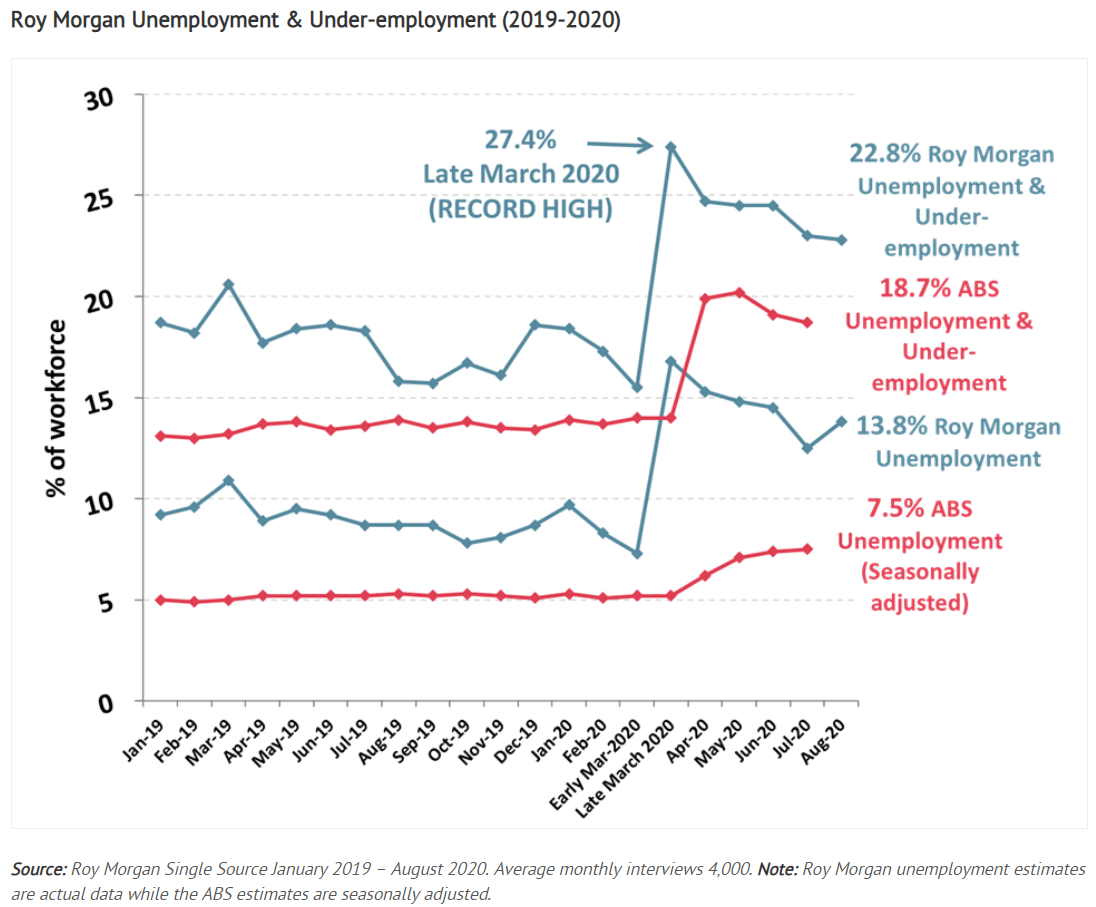Business lobby, the Committee for Economic Development of Australia (CEDA), has long been a shill for the ‘Big Australia’ mass immigration policy, frequently releasing illogical and contradictory ‘research’ supporting the cause.
Today, CEDA has released a paper demanding that Australian taxpayers provide JobKeeper and JobSeeker payments to temporary visa holders in order to make Australian a more attractive destination for migrants and international students:
When the pandemic hit, like many countries Australia rapidly put in place additional income and wage support for unemployed and furloughed workers. Australia did not extend these benefits to those who weren’t either citizens or permanent residents. This left many temporary migrants in the lurch – unable to return home and unable to receive income support in Australia…
Support from state governments has been piecemeal and councils like the City of Melbourne have created meal programs and vouchers for students. These programs have been so heavily subscribed they have been temporarily shut down. The state governments have offered some financial relief for students, to be administered by the universities, but the funds for some universities were exhausted in weeks.
States should top-up the relief packages that were made available to students earlier in the year, particularly in Victoria where the impact of a second lockdown is negatively affecting international students. Many of them worked in casual employment and in jobs that have been disproportionately affected by the downturn. The decision of the government to rule temporary migrants (including international students) ineligible for support further disadvantaged this group.
The government has offered minimal financial support pathways to temporary migrants. The ineligibility of temporary migrants for JobKeeper results in an incentive for employers to keep workers who are Australian citizens and permanent residents over temporary migrants. The government has chosen so far not to extend JobKeeper to temporary migrants, even after updated forecasts suggested the program would cost less than first thought due to shorter than expected lockdowns and associated contractions in economic activity…
JobKeeper and JobSeeker payments should be extended to temporary migrants… In absence of an extension to JobKeeper and JobSeeker payments, states should top up their relief packages for international students, particularly in Victoria where students are experiencing the impact of a second lockdown…
International education is Australia’s largest service export, contributing $37.6 billion to the Australian economy last year and supporting 240,000 jobs. This sector cannot be left to wither on the vine.
The claim that “international education is Australia’s largest service export, contributing $37.6 billion to the Australian economy last year and supporting 240,000 jobs” is certainly fake given most international students rely on employment to pay their bills and have been left destitute by the COVID-19 pandemic.
Money earned in Australia by international students is not an export, yet it is wrongly treated as such. Seriously, what other ‘export’ requires welfare payments from taxpayers?
Moreover, CEDA explicitly notes in its report that “61 per cent of international student visa holders were employed”. Given there are 555,000 student visas currently on issue, this means that the number of jobs ‘taken’ by international students (338,550) far outweighs the 240,000 jobs that they supposedly support.
Either way, the so-called economic benefits of international education to the Australian economy are wildly overestimated.
According to the Grattan Institute, extending JobKeeper to temporary migrants would cost Australian taxpayers a whopping $10 billion over six months. Adding JobSeeker and other support programs into the mix would obviously cost Australian taxpayers billions more.
In addition to costing a fortune, extending welfare to temporary migrants would incentivise them to stay in Australia to compete against locals for increasingly scarce jobs.

CEDA makes this point explicitly:
“The ineligibility of temporary migrants for JobKeeper results in an incentive for employers to keep workers who are Australian citizens and permanent residents over temporary migrants”.
This completely contradicts the initial purpose of Australia’s temporary migration program, which was developed to help plug “skills shortages” across the economy.
Temporary visas were also marketed as giving the economy flexibility: the migrant intake could quickly expand when skills were needed but then in times of strife those on temporary visas could return to their home countries.
Temporary visas were supposed to act as a shock absorber for the Australian economy.
Now that the Australian economy is facing its biggest decline since the Great depression, and labour underutilisation has surged, it is time for this “flexibility” to be allowed to take effect and a large chunk of the 2 million-plus temporary migrants in Australia to return home.
Keeping so many temporary visa holders in Australia would only worsen the unemployment queues and further depress wages, smashing Australia’s working class.
The migrant workforce should never have been allowed to grow so large in the first place. It must be allowed to fall away with the economic cycle.
If the Australian Government can work with universities to charter flights to bring international students into Australia, it can also work with embassies to charter flights to repatriate foreign nationals.

